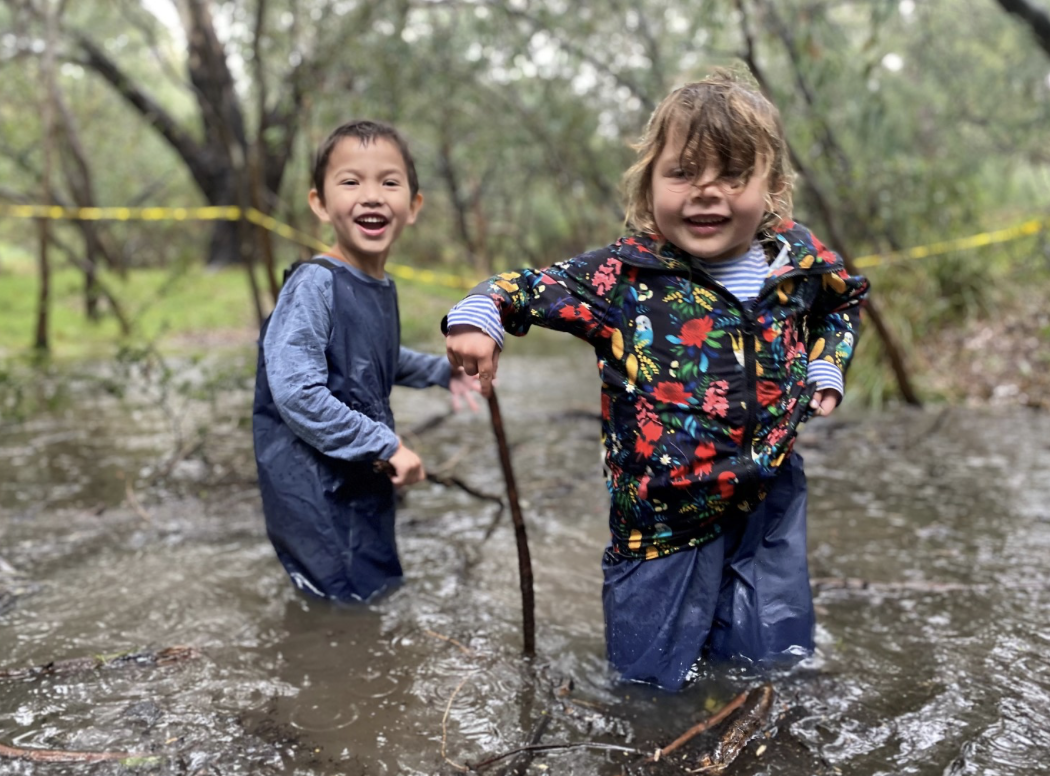Yay for Risky Play: Building Big Confidence in Little Kids
Now that we’ve made it to this colder, darker, wetter season known as Seattle winter, you might notice your little one becoming more stir-crazy with limited options for getting their wiggles out. Even with appropriate gear, it can be daunting to get outside and be met with slippery playground equipment, standing water, and any other things that might have our adult “not safe!” alarm bells ringing. Nevertheless, quieting those alarm bells and incorporating these risks into your child’s play can actually have some pretty big benefits! In the early childhood world, we refer to this type of play as “risky play.”
What is Risky Play?
Risky play is defined as play that is thrilling and exciting while also involving some risk of injury. Elements of risky play can include climbing heights, traversing tough terrain, rough and tumble play, using adult tools, and exploration that might lead to getting lost.
What are the Benefits of Risky Play?
Aside from simply being an outlet for movement and energy, risky play offers several benefits to children’s development. Climbing, jumping from a height, and “roughhousing” can build children’s gross motor skills, while using tools such as hammers and screwdrivers aids in developing fine motor skills. Risky play also presents many opportunities for social-emotional and cognitive development. As they climb to the top of a play structure or use a real hammer to drive a golf tee all the way into a pumpkin, children work through challenging emotions such as nervousness and fear and find their way to confidence in their own abilities and a sense of accomplishment. Incorporating risky play with healthy limits can also improve caregivers’ confidence and trust that their children will make safe choices even if they don’t always have 100% of our attention. With adult help, children can develop the cognitive skills necessary to discern if a situation is safe to enter or a choice is safe to make.
How to Make Safe, Risky Play Happen
Two critical steps to executing healthy risky play are setting limits and working through tricky situations. Before risky play begins, acknowledge things your child must be aware of, such as slippery surfaces and physical boundaries. Examples of this can include:
Doing these activities only with adult supervision.
Climbing only as high as the adult can reach. This way, if the child needs to be “bailed out” of their climbing experience, the adult can reach them from their own stable position.
Maintaining 3 points of contact during climbing; only move one hand or foot at a time.
Using tools only for their specific purpose.
Containing the exploration area to a space between defined landmarks.
As risky play is happening, be sure to check in with your child to help them be mindful of things they might experience. During rough play, you can ask if the game is still fun or if the child is ready for a break. You can also model asking for a break or enforcing a boundary for yourself!
As they climb a tree limb or prepare to jump from the couch to a pile of cushions on the floor, you can ask if their hands feel strong or if their footing feels stable. If the answer to those questions is no, the best course of action is to help your child find a secure position instead of simply “bailing them out.” When we hear a little one shout, “Get me down!” it’s likely our first instinct to do exactly that, but by pausing and showing them where to grab or guiding their foot to a more solid position, you can help them practice getting themselves down safely.
Of course, if the child is too distressed to think about how to get unstuck from their situation, helping them out is exactly what we grown-ups are there for! Kids learn best when they know they will be safe and supported no matter what.




